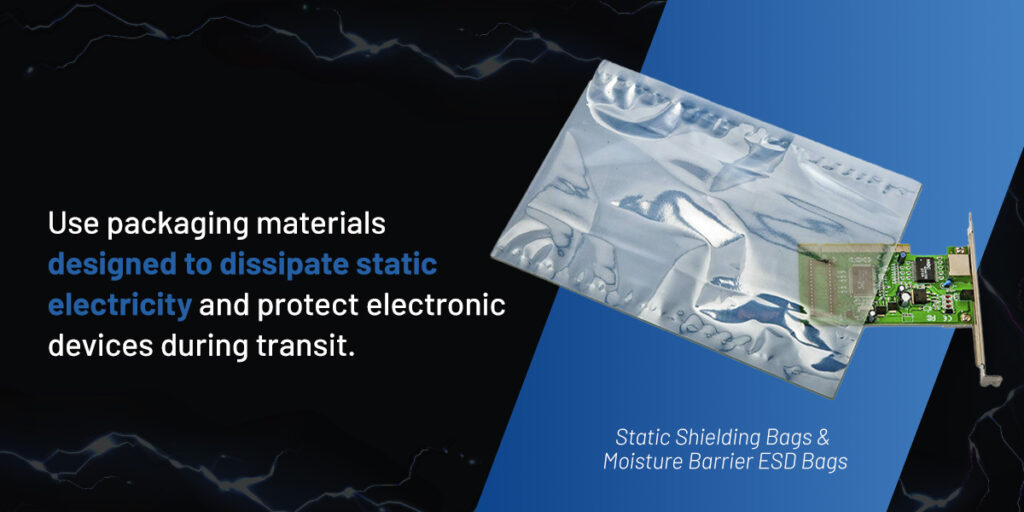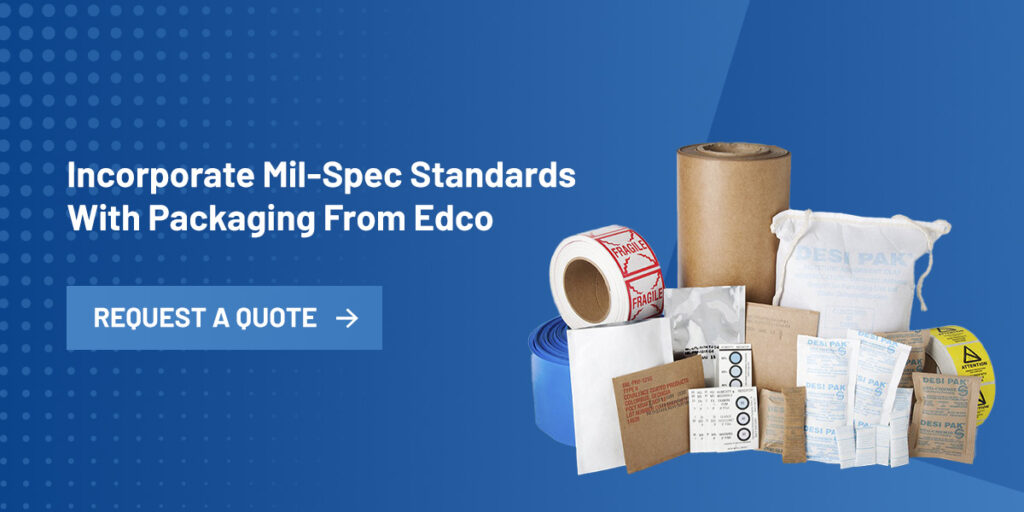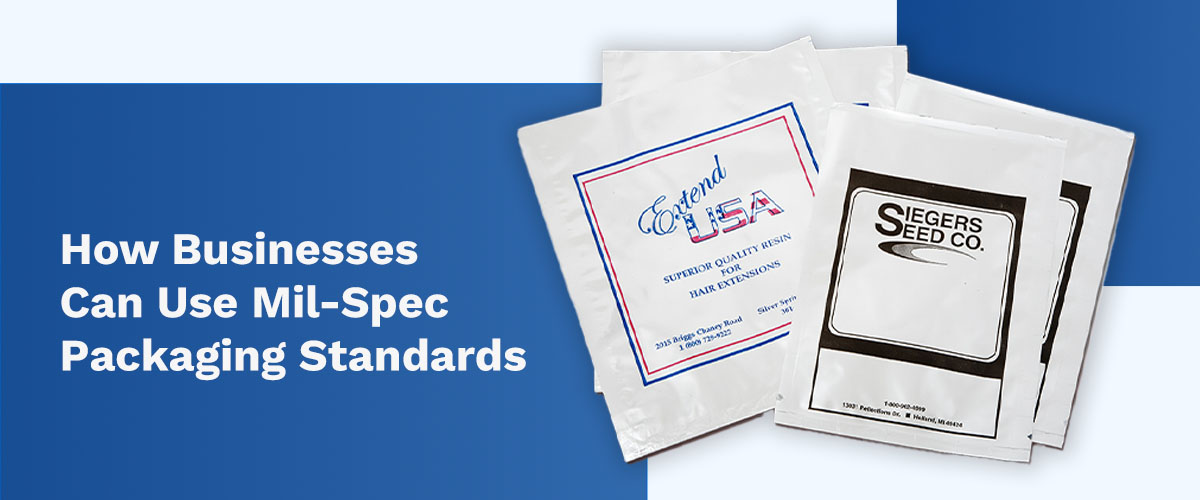The military sets specific guidelines, called mil-spec standards, that ensure secure packaging for items before shipping. These requirements prevent damage, loss or delivery delays. As a commercial business owner or shipping professional, you may be interested in incorporating mil-spec packaging standards to save money and enhance protection, compliance or efficiency.
Benefits of Adopting Military Packaging Standards for Shipping
Implementing military packaging standards will give your business several advantages.
- Enhanced product protection: Military specification standards reduce the risk of damage during transit, leading to fewer returns and replacements.
- Compliance: These standards comply with international shipping regulations and industry best practices, decreasing the likelihood of fines or delays.
- Cost savings: Improved protection means fewer damaged goods, which results in cost savings from fewer losses, returns and associated expenses.
- Improved efficiency: By adhering to military packaging standards, businesses can streamline their shipping processes, enhance inventory management and improve logistics efficiency.
- Customer satisfaction: Reliable packaging leads to fewer incidents of damaged goods, enhancing your brand reputation and your customers’ satisfaction.
- Risk mitigation: Military standards mitigate risks associated with shipping, such as environmental hazards or mishandling during transportation.
- Durability: Mil-spec packaging can withstand high temperatures, humidity, corrosion, vibrations and rough handling to protect products inside.
- Versatility: Mil-spec packages solve unique industry needs with customization options. For example, some packaging solutions protect explosive products that can become dangerous without proper protective materials.
Packaging Standards to Follow
Your business can enhance the safety and security of your shipping goods by following six defense standards — also known as MIL-STD standards. They provide guidelines on the technical requirements for military-unique or modified commercial methods, practices, procedures and processes.
- Data standards: Agreements on data representations enhance the quality and shareability of environmental data by improving its compatibility and efficiency.
- Interface standards: These specify characteristics for system interchangeability, interoperability and compatibility with non-government standards preferred for interface requirements.
- Design criteria standards: These define military-specific design or functional criteria for system development and impact product manufacturing.
- Manufacturing process standards: Mil-spec packaging outlines procedures and criteria for packaging items to meet durability, protection and compliance requirements.
- Standard practices: Commercial firms that obtain Department of Defense contracts must follow their guidelines.
- Test method standards: Prevention-based process control over sampling requirements promotes efficient quality systems and continuous process improvement for defense contractors and suppliers.
The following packaging standards provide a framework for businesses to package products effectively.
MIL-STD-129 Standards
The MIL-STD-129 packaging standards are guidelines for labeling and marking items shipped to or within the DoD. These specify how to identify items to ensure accurate tracking, inventory control and shipment visibility.
- Labeling requirements: Labels must include a National Stock Number, part number, serial number, contact details and unit of issue.
- Packaging compliance: Verify that packaging materials meet the standards for protecting your equipment during transit.
- Shipping container information: Include destination address, handling instructions and transportation control numbers on shipping containers.
- Barcode implementation: Use barcodes for automated data capture and tracking capabilities.
- Unique identification: Assign a unique item identifier for high-value items to enhance traceability and help with inventory management.
- Marking legibility: Ensure markings are visible, legible, durable and do not fade over time.
- Size of marking: Markings should be in clearly visible capital letters of equal height in the largest font size that is practical for the packaging dimensions.
- Labeling ammunition and explosives: If shipping ammunition or explosives, include a Navy ammunition logistics code or DoD identification code with 2D barcode markings.
Documenting your packaging processes can improve your internal shipping processes and ease auditing.
MIL-STD-1686 Standards
MIL-STD-1686 was the military’s standard for controlling susceptible items during transit. However, ANSI/ESD S20.20 has replaced it. It’s a globally recognized standard for ESD control developed by the Electrostatic Discharge Association and approved by the American National Standards Institute.
The ANSI/ESD S20.20 packaging standard outlines the requirements for preventing damage to sensitive electronic components caused by static electricity.
- ESD control measures: Establish and implement an outlined ESD control program for handling and packaging sensitive electronic components to maintain a static-safe environment and prevent damage from electrostatic discharge.
- Packaging materials: Use packaging materials designed to dissipate static electricity and protect electronic devices during transit.

- Grounding procedures: Properly ground personnel, equipment and packaging materials to prevent static buildup.
- Compliance verification: Regularly test and verify compliance with these standards to ensure effective ESD protection measures are in place.
- Training: Educate personnel involved in handling and packaging electronic components on proper ESD control practices.
- Documentation: Maintain records of ESD control procedures and testing results to demonstrate your adherence to the standards and facilitate audits.
MIL-STD-2073 Standards
MIL-STD-2073 applies to the military distribution system to preserve items against damage and deterioration during storage and transportation. This standard also protects military items against environmental elements and risks, such as corrosion, with appropriate packaging materials. Some products may contain metals that need volatile corrosion inhibitor protective packaging to combat corrosion. Others should use desiccant bags and moisture barrier bags.
Packaging levels depend on the needed protection.
- Level A — Maximum protection: Fragile pieces, high-value items and products shipped internationally or in harsh conditions require the highest-quality packaging materials.
- Level B — Standard protection: Domestically shipped items under normal conditions should have standard packaging materials and methods.
- Level C — Minimum protection: This level is for short-distance shipping or storage in controlled environments.
- Level D — Internal transfers: This level is for moving items within the same facility or nearby facilities under controlled conditions.
Incorporate Mil-Spec Standards With Packaging From Edco

Mil-spec packaging is robust and secure enough to keep your goods safe during shipping and storage in challenging environments. You can confidently pack and send products in a way that meets rigorous military requirements.
Edco Supply Corporation has an extensive selection of mil-spec protective packaging solutions to safeguard your items throughout the supply chain. Our products protect against corrosion, shock, vibration and structural damage.
Find out more about our DoD-compliant military specification packaging or get in touch with our team if you have any questions.



